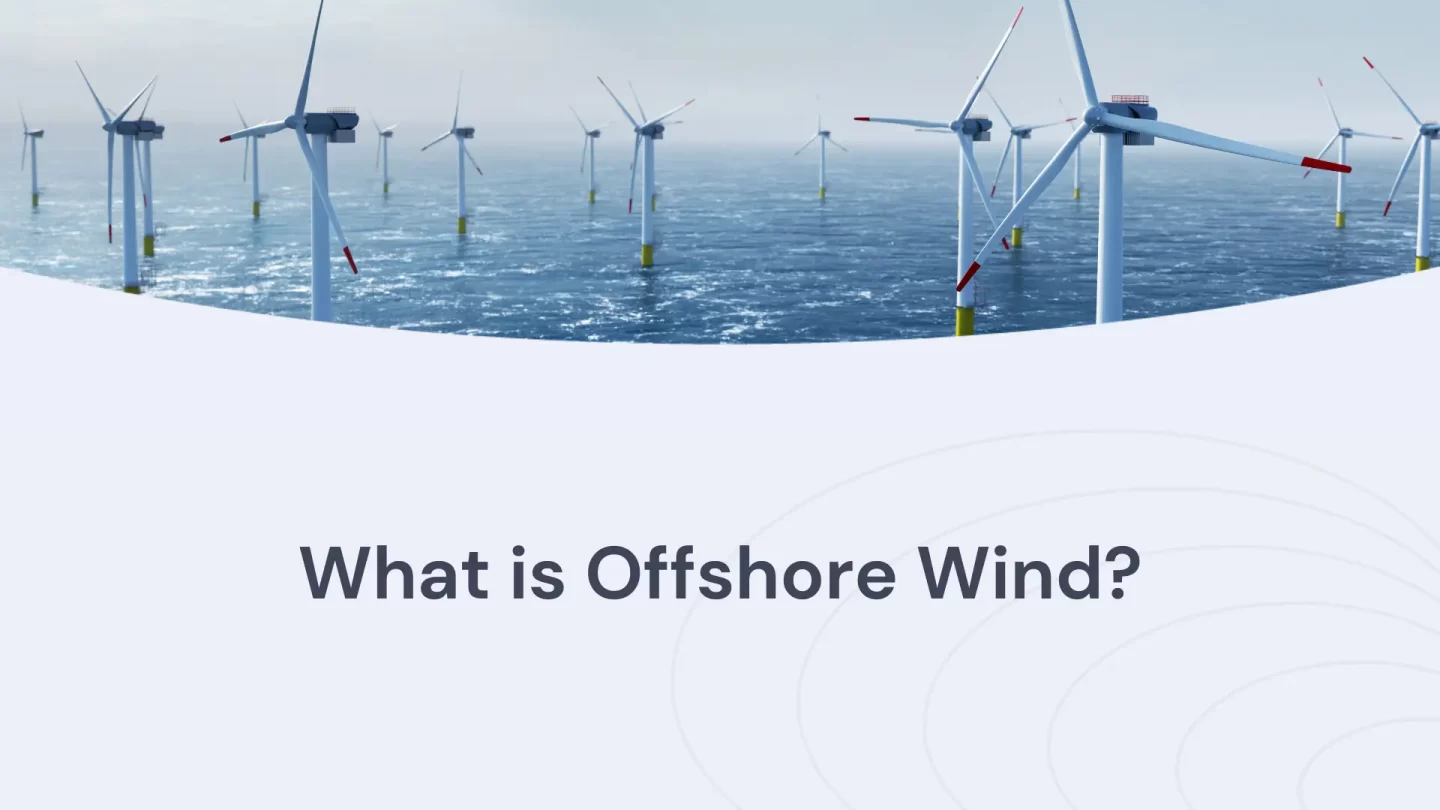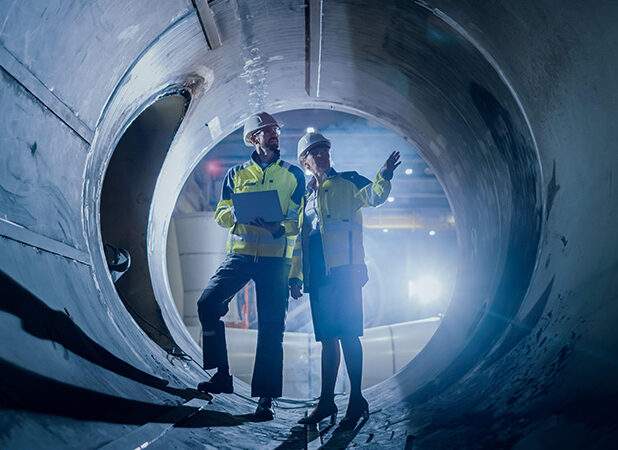Offshore wind power uses wind turbines to generate electricity in bodies of water, like oceans or large lakes. These turbines are placed in areas with higher and more consistent wind speeds. This makes them an ideal source of renewable energy. Offshore wind farms are usually located far from shore. This reduces their impact on shipping lanes and other human activities.

This power has gained popularity in recent years due to its potential to produce large amounts of electricity. The turbines in offshore wind farms are usually larger than those used onshore and generate more electricity per unit. Wind turbines can also be placed in deeper waters where the wind is stronger and more consistent. This placement further increases their potential energy output.

This diagram shows the path power takes from generation with a wind turbine to distribution to homes.
Pros and cons of offshore wind
One of the main benefits is that it is a clean and renewable source of energy. Unlike fossil fuels, it does not produce harmful pollutants or greenhouse gases that contribute to climate change. Offshore wind farms also have the potential to create jobs and stimulate local economies.
However, offshore wind power also faces some challenges. The installation and maintenance of wind turbines can be more expensive and difficult than their onshore counterparts. The harsh ocean environment can also cause wear and tear on the turbines, leading to higher maintenance costs and reduced lifetimes.
Conclusion
Despite these challenges, offshore wind power remains an important part of the renewable energy mix. It is expected to grow in popularity in the coming years. As technology improves and costs decrease, this power could become an even more significant source of clean energy.
Frequently asked questions
Offshore wind power is a clean and renewable source of energy that does not produce harmful pollutants or greenhouse gases. It has the potential to create jobs and stimulate local economies, and wind farms can generate more electricity per unit than their onshore counterparts.
It can be more expensive and difficult to install and maintain than onshore wind power. The harsh ocean environment can cause wear and tear on the turbines, leading to higher maintenance costs and reduced lifetimes.
It is an important part of the renewable energy mix and is expected to continue to grow in popularity in the coming years. As technology continues to improve and costs decrease, this power has the potential to become an even more significant source of clean and renewable energy.






